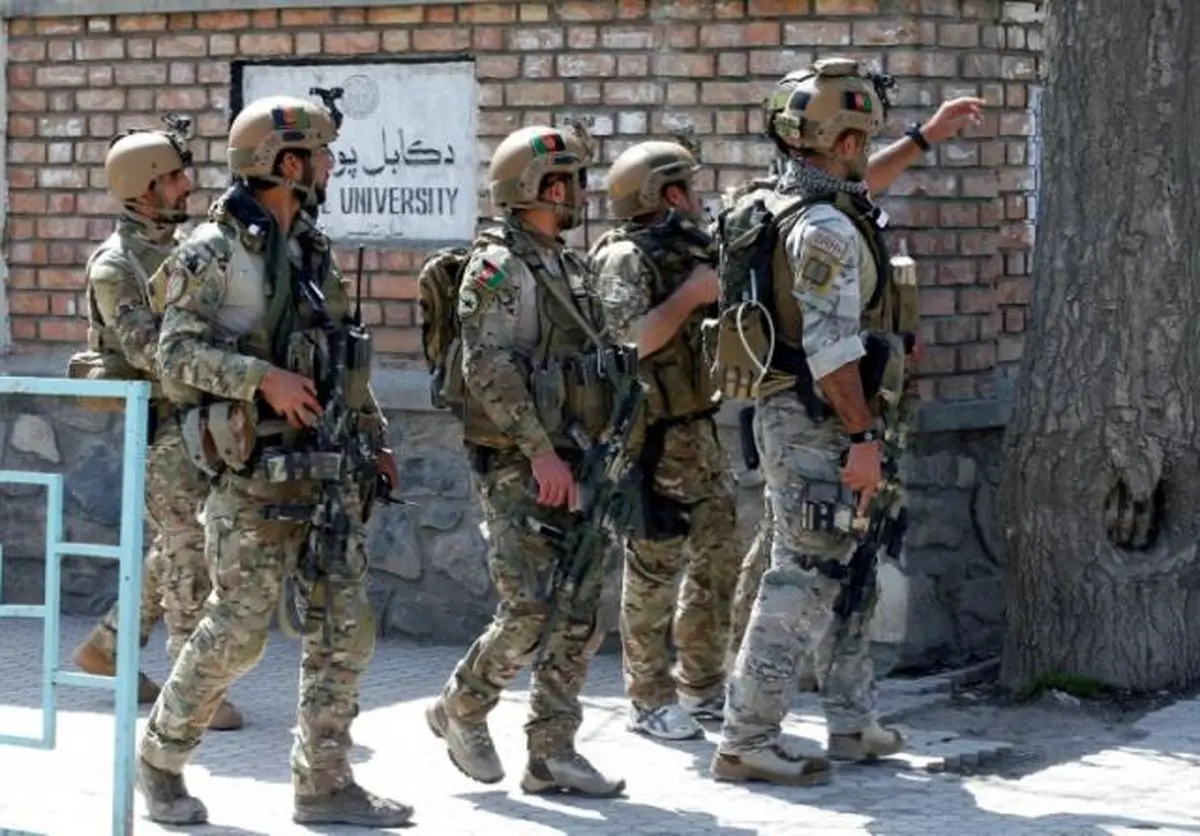Afghan security forces see drop in numbers as security deteriorates

The number of Afghan security forces decreased by nearly 11 percent in the past year, the U.S. government’s top watchdog on Afghanistan said on Tuesday, an indication of the difficulty Kabul will have in dealing with its precarious security situation.
Twin blasts in the Afghan capital Kabul killed at least 26 people on Monday, including nine journalists who had arrived to report on the first explosion and were apparently targeted by a suicide bomber.
The attacks, a week after 60 people were killed as they waited at a voter registration center in the city, underlined mounting insecurity despite repeated government pledges to tighten defenses.
The attacks in rapid succession were a grim reminder of the strength of both the Taliban and Islamic State’s emerging Afghanistan branch to wreak violence despite stepped up air attacks under U.S. President Donald Trump’s new policy for the 16-year-old war.
In a report released on Tuesday, the Special Inspector General for Afghanistan Reconstruction, or SIGAR, said the number of forces in the Afghan National Defense and Security forces (ANDSF), which includes the army, air force and police, totaled an estimated 296,400 personnel as of January. That was a drop of 10.6 percent compared to the same month in 2017.
The authorized strength of the ANDSF is 334,000 personnel.
The United States has for nearly two decades been seeking to build Afghan security forces capable of defending and holding territory.
“Building up the Afghan forces is a top priority for the U.S. and our international allies, so it is worrisome to see Afghan force strength decreasing,” John Sopko, the head of SIGAR, told Reuters.
Thousands more U.S. troops have been sent to Afghanistan to help train the army, and commanders have been given greater authority to carry out air strikes against the militants in a major reversal of the previous policy of phased withdrawal of American forces.
Publicly, U.S. officials have presented an optimistic view of the situation in Afghanistan. The top U.S. general in Afghanistan said late last year that the country had “turned the corner.”
Asked what his goal in Afghanistan was in the next year, U.S. Defense Secretary Jim Mattis told a Congressional hearing he wanted “a more capable Afghan force, between their military and their police (and) the violence levels going down.”
On Monday, Mattis said the spate of recent attacks had been expected and the militants were “on their backfoot.”
“This is the normal stuff by people who cannot win at the ballot box, so they turn to bombs,” Mattis said.
Privately, however, U.S. officials have been more circumspect.
U.S. intelligence officials, speaking on the condition of anonymity, said that despite extensive U.S. training and support, the vast majority of Afghan forces are incapable of preventing the Taliban from retaking much of the territory the militant group lost after the United States invaded the country in 2001.
“While Afghan forces are stronger now than they were a decade ago, they continue to struggle in a big way. Ultimately, that’s a failure of U.S. policy,” said Michael Kugelman, with the Wilson Center think tank in Washington.
SIGAR added in the report that the percentage of population controlled or influenced by the Afghan government increased to 65 percent as of January 2018, up 1 percent compared to October.
END
